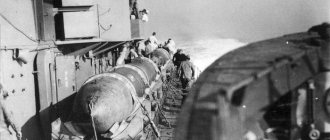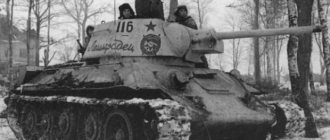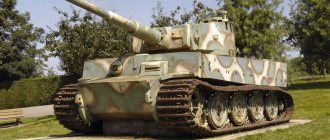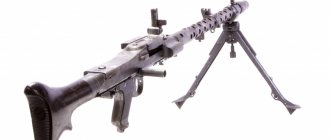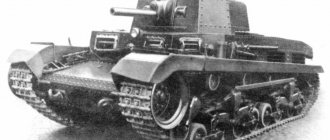When did the first torpedoes appear?
The torpedo, or as it was called at that time - a self-propelled sea mine, was invented by two scientists at once, located in different parts of the world, who had nothing to do with each other. This happened almost at the same time.
In 1865, Russian scientist I.F. Aleksandrovsky, proposed his own model of a self-propelled mine. But it became possible to implement this model only in 1874.
In 1868, Whitehead presented to the world his scheme for building a torpedo. In the same year, Austria-Hungary acquired a patent for the use of this scheme and became the first country to possess this military equipment.
History of the creation of the torpedo
In a general sense, by torpedo we mean a metal cigar-shaped or barrel-shaped military projectile that moves independently. The projectile received this name in honor of the electric stingray about two hundred years ago. The naval torpedo occupies a special place. It was the first to be invented and the first to be used in the military industry.
In a general sense, a torpedo is a streamlined barrel-shaped body, inside of which there is an engine, a nuclear or non-nuclear warhead and fuel. The tail and propellers are installed outside the hull. And the command to the torpedo is given through the control device.
The need for such weapons arose after the creation of submarines. At this time, towed or pole mines were used, which did not carry the required combat potential in a submarine. Therefore, the inventors were faced with the question of creating a combat projectile, smoothly flowing around water, capable of moving independently in the aquatic environment, and which would be able to sink enemy submarines and surface vessels.
Types of torpedoes
- Depending on the type of engine: compressed air, steam-gas, powder, electric, jet;
- Depending on the guidance ability: unguided, upright; capable of maneuvering along a given course, homing passive and active, remote-controlled.
- Depending on the purpose: anti-ship, universal, anti-submarine.
One torpedo includes one point from each unit. For example, the first torpedoes were an unguided anti-ship warhead with a compressed air engine. Let's consider several torpedoes from different countries, different times, with different mechanisms of action.
In the early 90s, the Russian fleet acquired the first boat capable of moving underwater - the Dolphin. The torpedo tube installed on this submarine was the simplest - pneumatic. Those. the type of engine, in this case, was compressed air, and the torpedo itself, in terms of guidance ability, was uncontrollable. The caliber of torpedoes on this boat in 1907 varied from 360 mm to 450 mm, with a length of 5.2 m and a weight of 641 kg.
In 1935-1936, Russian scientists developed a torpedo tube with a powder engine. Such torpedo tubes were installed on type 7 destroyers and light cruisers of the Svetlana type. The warheads of such a device were 533 caliber, weighing 11.6 kg, and the weight of the powder charge was 900 g.
In 1940, after a decade of hard work, an experimental device with an electric motor was created - ET-80 or “Product 115”. A torpedo fired from such a device reached a speed of up to 29 knots, with a range of up to 4 km. Among other things, this type of engine was much quieter than its predecessors. But after several incidents involving battery explosions, the crew used this type of engine without much desire and was not in demand.
Supercavitation torpedo
In 1977, a project with a jet engine was presented - the VA 111 Shkval supercavitation torpedo. The torpedo was intended to destroy both submarines and surface vessels. The designer of the Shkval rocket, under whose leadership the project was developed and implemented, is rightfully considered G.V. Logvinovich. This torpedo missile developed simply amazing speed, even for the present time, and inside it, for the first time, a nuclear warhead with a power of 150 kt was installed.
Technical characteristics of the VA 111 “Shkval” torpedo:
- Caliber 533.4 mm;
- The length of the torpedo is 8.2 meters;
- The projectile speed reaches 340 km/h (190 knots);
- Torpedo weight – 2700 kg;
- Range up to 10 km.
- The Shkval missile-torpedo also had a number of disadvantages: it generated very strong noise and vibration, which negatively affected its ability to camouflage; its travel depth was only 30 m, so the torpedo in the water left a clear trail behind itself and was easy to detect , and it was impossible to install a homing mechanism on the torpedo head itself.
For almost 30 years, there was no torpedo capable of withstanding the combined characteristics of the Shkval. But in 2005, Germany proposed its development - a supercavitation torpedo called “Barracuda”.
The principle of its operation was the same as that of the Soviet “Shkval”. Namely: a cavitation bubble and movement in it. The Barracuda can reach speeds of up to 400 km/h and, according to German sources, the torpedo is capable of homing. Disadvantages also include strong noise and small maximum depth.

